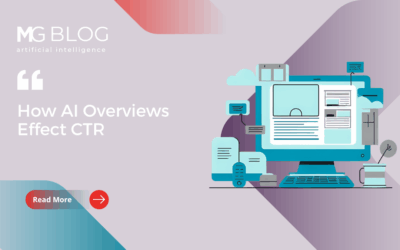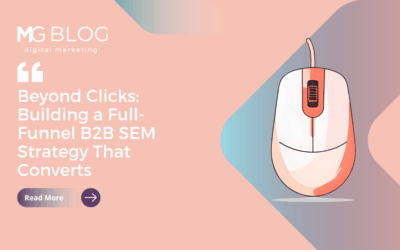
Why a Decrease In Global Ad Spend Could Be An Opportunity for Marketers
COVID-19 has reshaped our current economic landscape in a way we haven’t seen since the Great Recession of 2008. Industries such as travel, hospitality and physical retail are grinding to a halt due to sweeping travel restrictions and stay-at-home orders meant to flatten the curve, and are only beginning to re-open in a limited fashion.
At the time of this writing, many states are grappling with phased reopenings of their economies. At the same time, the stock market and other economic indicators send mixed signals about the timetable for recovery. With uncertainty abounding, marketing teams are being asked to shift priorities and do more with less – but that hasn’t stopped the pressure of driving awareness and leads to help drive sales.
In the following, I’ll examine:
- The shifting supply and demand of the digital ad economy and its impact
- What signs of stabilization mean for the ad industry
- Key digital trends (based on the data) and whether to double down (or not)
- Five critical opportunities for marketers
To help guide the analysis, I looked at publicly available data and juxtaposed that with our proprietary data. In addition I looked at anecdotes and findings from partners, such as StackAdapt, Drift and 180byTwo, who work across the digital services continuum from data to delivery and in-between.
The shifting supply and demand of the digital ad economy
The shock from the pandemic has affected consumer confidence – falling to a 32 month low at the end of March. That number stands to move lower as millions more people file for unemployment and we head towards a possible recession. All of these factors have compounded to put pressure on businesses to rethink their approaches to marketing – while re-evaluating digital ad spending going into Q3.
A recent article from CNBC stated ad networks such as “Facebook, Google and Twitter see ad prices drop precipitously as companies in travel, entertainment and physical retail freeze spending.” Global advertisers such as Expedia are contemplating slashing budgets by as much as 80 percent – in turn opening up inventory in digital supply chains at a rate not seen since the the last recession. And while Google and Facebook expect to see annual revenue decline for the first time in their short histories, they are more insulated than many smaller publishers such as local newspapers. Even global behemoths like Yelp – whose advertising arm thrives on service-related industries like restaurants and bars, barbershops and cleaning companies – have seen their advertising revenue evaporate. The company recently laid off 1,000 people at the end of March.
In a recent New York Times article, Alex Palmer of Gupta Media noted “that prices of Facebook ads have declined 35 percent to 50 percent on average in recent weeks.” Even companies that are still spending have had to revamp their advertising campaigns to meet changing consumer expectations on communications during this sensitive period – forcing their advertising agencies to pivot to meet expectations.
Video, which accounted for 49 percent of all Programmatic display advertising expenditure in 2019, could drop as much as 5.2 percent year-over-year in the first half of 2020 as the coronavirus continues to constrict marketing budgets, a revised forecast from eMarketer said.
Are signs of stabilization here to stay?
But all the news hasn’t been bad – Snapchat over delivered on earnings expectations in Q1, raising their shares by 37 percent. While they did see a drop in advertising revenue in March, it wasn’t as bad as feared – giving other publishers hope.
Facebook also saw shares rise after announcing that they were seeing ad revenue “normalize” in April during their Q1 earnings call. At the same time, they’re seeing a huge jump in the public using their services which include WhatsApp, Instagram and Facebook.
As the economic impact of COVID-19 causes B2C companies to pivot their advertising strategy, it’s also forcing B2B organizations to adjust their business planning and global marketing strategies. For example, the once-thriving trade show circuit has ground to a halt. A report published by data intelligence company PredictHQ indicated that in March alone, “concerns about the coronavirus led to an 875 percent surge in cancellations and postponements of significant events.”
Marketers have shifted priorities from informal in-person events, happy hours and dinners – which helped break down barriers and form bonds – to betting on what is often unfamiliar technology or practice. The all-encompassing term “digital transformation” has been thrust on a wide swath of companies.
To be able to uncover market opportunities, leaders need to understand how COVID-19 is impacting and altering consumer behavior. We’ve already seen considerable shifts to companies like Zoom for video-conferencing, TelaDoc for telehealth – but where do we see changes in content consumption?
Key digital trends to double down on (or not)
With so many being lucky enough to be able to work from home during the pandemic, the shift to digital consumption has only accelerated. Over-the-top (OTT), YouTube, and traditional broadcast media have all seen significant increases in traffic. While podcasts might see a spike, the lack of a drive-time commute could hurt overall growth in listenership.
At the start of the crisis, Reddit saw a 20-50 percent spike in traffic to some of its larger subreddits. Reddit also has an advertising arm that expects double-digit ad revenue growth by 2021 and is currently seeing premier advertisers such as Snapchat, Microsoft and the NFL targeting users.
Facebook reported that in “countries hit hardest by the virus, total messaging had increased more than 50% over the last month,” with users in Italy spending 70 percent more time on Facebook applications than usual. Video advertising platform Unruly reported in a study “that overall time spent online has dramatically increased in the U.S. — with consumers spending a lot more time than before on their mobile phones (50%), connected T.V.s (42%) and laptops (35%).”
Research from Nice People at Work revealed “that in the United States streaming of all content climbed 73 percent between February 25 and March 22. Further, when comparing the week of March 16-22 to a typical week, U.S. streaming plays rose 29 percent. The blog notes increases in plays in California, New York and Illinois—three states currently on lockdown—by 39, 24 and 35 percent, respectively.
What’s unique about this situation is that while we have peak traffic, a bulk of the world’s biggest publishers have taken their digital advertising arms offline. Our Programmatic partners have seen inventory increasing as much as 41 percent on news publishers sites (across native, display, video, and OTT) with an expectation for that to continue well into 2020.
Not surprisingly, we’ve seen that engagement rates across healthcare-related campaigns have jumped from an average of one percent up to five percent, in some cases, especially when it revolved around COVID-19 related content and material. At the same time, Drift, a conversational marketing and chat-bot provider has seen engagement through chat-bots increase as much as 500 percent on their customers’ sites.
Our own Merritt Group campaigns have seen a slight decrease in overall CPM cost across Twitter, Google Search, Facebook and YouTube in a comparison we did between February and March. April numbers saw a marked decrease in overall CPM and CPC for our Programmatic and Google related campaigns.
One area where we haven’t seen any drop in price is LinkedIn, with CPMs and CPCs staying in-line with cost pre-pandemic. LinkedIn’s premier first-party B2B data drives some of the most expensive costs in the market and it doesn’t seem like that is slowing down anytime soon. CPCs for C-Suite remain anywhere from $6 to $12 depending on the industry and the objective.
5 key opportunities for marketers
Given the current landscape – companies that have smaller budgets, like start-ups and SMBs, can benefit from getting their message out at a lower cost. With advertising behemoths in industries such as travel, fast food, retailers and automotive sitting on the sidelines, the opportunity is palpable.
Understanding where the opportunity lies for your organization is contingent on your current state of affairs. For some companies it’s business as usual and for others they’re seeing a slow down across the board. The main takeaway is that whatever position you’re currently in – you can pivot and use it to your advantage.
I’ve compiled our top five areas for you to focus on given the current environment.
#1 Refine Your Customer Experience
If your company has paused digital advertising and is slowing down marketing and sales outreach, then revisiting your overall customer experience becomes paramount.
Marketers need to understand their prospects’ customer journey all the way through loyalty and evangelism, while understanding that the modern journey is anything but a linear progression.
If you’ve got time to refine your ideal customer profiles, adding criteria about how they might be most receptive to marketing and help during this time of need is a great place to start. What are you missing in terms of offering help and guidance?
Sending them a short survey through email or a poll on your site can help you get insight into their current frame of mind to help you deliver the help that they need – now. Being as empathetic and genuine as possible in their time of need can help develop a deeper bond between your brand and your audience that can last well beyond the current crisis.
Being empathetic crosses over to user experience – now is a good time to review your site metrics to figure out where the kinks are in your conversion flows. Looking at Google Analytics to understand your site’s entry and exit points will start to give you a 10,000 foot view of where your customers’ pain points are reflected on your site.
Investing in user experience tools such as HotJar, SmartLook, FullStory or using the built-in A/B testing of platforms like HubSpot can give you a deeper look into what your users are doing and where they’re getting frustrated.
Small tweaks in your website’s overall usability can positively impact your bottom line, increasing revenue and delighting your customers.
#2 Embracing Video & Audio Advertising
If you’re able to benefit from a reduction in ad costs, then exploring video is a great place to start. Social media platforms such as Facebook, Twitter and LinkedIn all offer video components that can be used to prime your pipeline.
Creating video campaigns to help drive brand awareness before you ask for a form fill is a great way to “warm” your audience. If you’re using an ABM strategy, then saturating target accounts while they’re progressing through your pipeline is a great way to keep your brand top of mind while supporting your sales reps. In our own tests we’ve seen LinkedIn video drive a lower cost per click then Sponsored Update campaigns (up to a nine percent reduction in costs).
Another area to explore is over-the-top (OTT) advertising. Over the past three years, the media landscape has seen a huge shift to OTT broadcasting. Cord cutters have moved away from traditional set-top box cable moving to platforms such as Hulu, Sling and YouTube TV. Those same platforms are seeing an astronomical increase in viewership due to COVID-19, which should continue well through 2020.
Content served through these platforms can be consumed across devices such as gaming consoles, mobile devices and laptops. The major benefit to OTT advertising is being able to align your video strategy with larger display and programmatic campaigns by leveraging customer data. This ensures you’re hitting your addressable market across all their devices from web to videos on YouTube.
Audio inventory for podcasts can be leveraged in the same way. Although there has been a slight drop in consumption of streaming media in mid-March, most analysts expect that to normalize. Now could be a good time to talk to your media agency to see what inventory is available and how you can integrate it into your larger marketing strategy.
#3 Conversational Marketing
With so many more people online during this time, making sure they can get to the information they need quickly on your site can mean the difference between a demo and a sale or a bounced visit.
Chatbots give your prospects the option to talk to a sales rep without the need to fill out a form and also allow you to qualify them to see if they’re a fit for follow up. HubSpot and Drift both offer chatbot solutions that can be tailored to help support your marketing and sales efforts.
Drift recently released an informative case study from a health care provider that used the chatbot service to onboard customers in the early days of the COVID-19 crisis. This is another great example of using marketing technology to pivot and reduce dissonance while ensuring a seamless customer experience.
But conversations aren’t just about digital – at Merritt Group we’ve been using Loom to help illustrate more complex concepts to our clients that don’t have time for a call. Adding in that touch of personalization can help you gain trust and form a bond with your customers and prospects much more quickly than an email.
#4 Experimentation
Agile marketing is something that we’ve been talking more and more to our customers about. Forming hypotheses about messaging and sales triggers to carry out tests can provide valuable data and insights to your internal teams.
With cheaper inventory abounding, it’s now possible to run more tests across more platforms to see what works best for your organization. Testing channels that you’ve never advertised on (Reddit for example) against tried-and-true pillars of your digital strategy can be a great place to start.
Message testing can also provide valuable insights into your customers and can be run easily in most advertising platforms.
#5 Data Hygiene
Having clean, up-to-date customer data has never been more important, especially when it comes to understanding where your customers are and serving them media.
With so many people working from home, it’s imperative to ask your agency how they’re addressing this shift. ABM vendors such as DemandBase use cookie-based targeting by “dropping cookies on users’ browsers when we see them enough times on a given IP address so that we can tie them to an employer when they travel or work from home.”
The problem with this strategy is that many browsers, such as Chrome and Safari, are blocking cookies and many people delete their browser cache often. This can lead to major issues if you’re using this as part of your media strategy. At Merritt Group, we recommend IP range targeting mapped to a mobile device ID.
Every device that connects to the Internet has an IP address that corresponds to a physical location. Most data providers map IP ranges to a business location which in turn maps to a mobile device ID. This is an additional identifier that was created for mobile devices and allows you to link identities to devices and target specific devices in specific households. At a time when most people are working from home this becomes crucial to delivering your message at the right time to the right person.
Our data partner 180byTwo has been at the forefront helping customers move away from cookies and over to Mobile Advertising IDs (MAIDs) through their AccountLink product that was released in 2019. The AccountLinkID contains B2B and consumer identifiers stitched together to allow for the seamless flow of data across all channels – helping marketers target their key accounts no matter where they are.
Merritt Group also recently went through an exercise where we cleaned up our CRM database. Removing contacts that have bounced, enriching current contacts with additional demographic and firmographic data and creating industry segments has allowed our email marketing to see a 13 percent increase in open rates and click to open rates. This has allowed us to get a lot sharper in terms of outreach and is helping drive sales and revenue.
Final Thoughts
With so much change to our industry happening in real-time, it’s crucial to be able to take a step back and re-evaluate what’s working and what’s not, and focus on incremental changes that you can choose to impact your business positively. For more thoughts on the current situation check out my colleague Melissa Chadwick’s presentation on ‘How To Market and Sell When It’s Not Business as Usual‘.
If you have any questions or would like a 15-minute consultation on your business strategy, you can reach out to me through LinkedIn or at irshad@merrittgrp.com.



